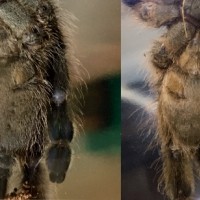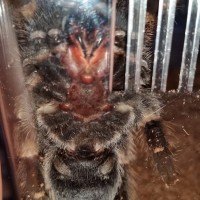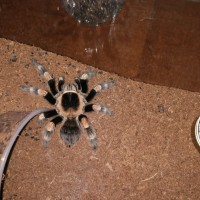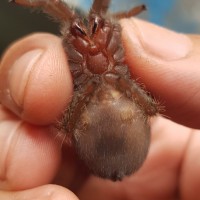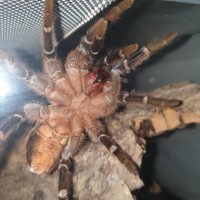K
Male or female B. Hamorii based on abdomen?
Buyers are arguing that my hamorii is a sub adult male. She is 5.5" and does not have any hooks on her legs. She also came from a molt which is why her abdomen is small. Unfortunately the exuvia was destroyed
Media information
Image metadata
- Filename
- 60946718_2770145076565274_6319544489115385856_o.jpg
- File size
- 212.4 KB
- Dimensions
- 768px x 1024px


